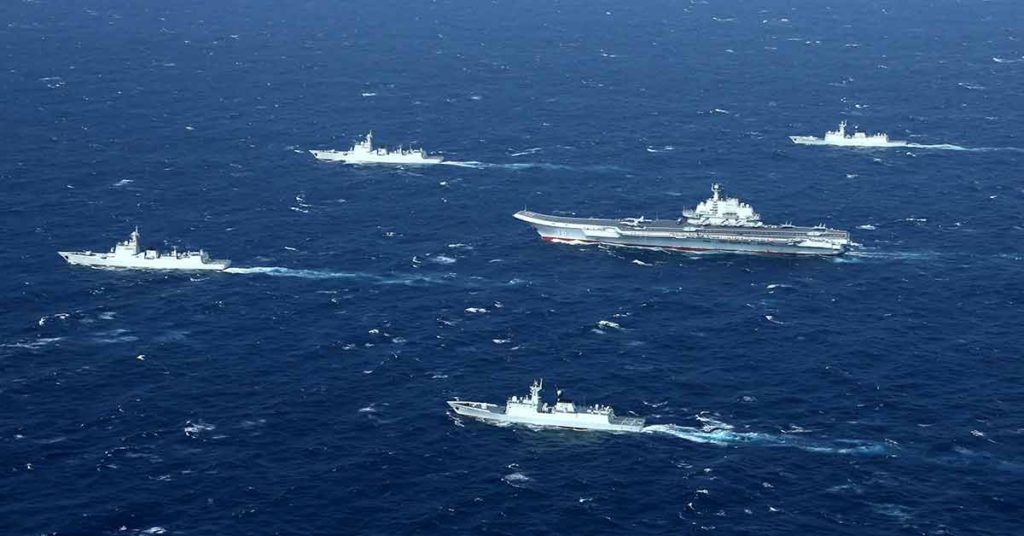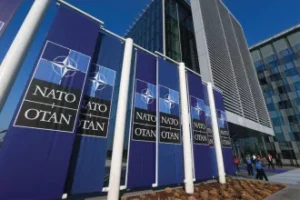
On 3 August, President Duterte issued a directive disallowing the Philippines from joining naval/maritime exercises and drills of other countries like the United States (US) in the South China Sea (SCS) to reduce tensions in the disputed waters. The US along with its allies like Australia and Japan has recently been conducting joint maritime exercises in the SCS.
Defense Secretary Delfin Lorenzana said, “President Rodrigo Duterte has a standing order to us, to me, that we should not involve ourselves in naval exercises in the South China Sea except our national waters, the 12-mile distance from our shores. We cannot exercise with them in the South China Sea. If one country’s action is considered as belligerent, another tension will normally rise, so I hope that all the parties in this exercise will work on their actions there, to exercise prudence and carefulness so that there will be no miscalculations that could further increase the tension.”
Furthermore, Presidential Spokesperson Harry Roque in a virtual Palace briefing on 4 August said that Duterte’s independent foreign policy stands: “The Philippines is a friend to all, an enemy to none.”
The Integrated Development Studies Institute (IDSI), a think tank based in Manila, has a similar take on this issue. It asserts that the entry of American, Australian, and Japanese battleships and frigates into the SCS can be likened to a return to the colonial period of the powers that dismembered China, where any “accident,” possibly deliberate ones, or incidents or miscommunications can happen in the SCS.
With the Philippines having no control of US warships crossing her territorial waters, and even with the Philippine president not allowed to inspect the US facilities, any involvement of the Philippines in any military exercises in the SCS, definitely means placing the Philippines in the crossfire. Duterte’s independent foreign policy would seem to be the best position for the Philippines rather than endanger the lives of countless Filipinos, like the millions lost during World War 2.
Duterte’s decision of disallowing the Philippines from participating in the naval exercise with the US and its allies beyond its national waters is against the backdrop of rising tensions and the ostensibly cold war atmosphere between China and the US, of which the potential military confrontation between the two superpowers is on the horizon. In any case, if the relationship between the two superpowers continues to go downhill in the coming months, then the battleground of the impending “cold” to “hot” war between China and the US would be the SCS.
US-China Rising Tensions
The looming cold war and conflicted relationship between the US and China, have their roots in the: (a) on-going trade and technology warfare between the two superpowers; (b) the Hong Kong predicament; (c) the “blame-game” over the novel coronavirus pandemic; (d) increased strategic positioning and competition between China and the US in the SCS; and (e) the recent freedom of navigation and naval exercises in the SCS by the US together with its allies Japan and Australia.
Likewise, the US declaration of China’s claim in the SCS as unlawful on 13 July was also a huge contributing factor that further heightened tensions between the two nations.
In the past, the US only concerned itself on issues related to the defense of freedom of navigation in the SCS. But it has now rejected the legal validity of China’s maritime claims in the SCS, while projecting a posture that it is now somewhat aligned with Southeast Asian countries (i.e. the Philippines, Brunei, Malaysia, Vietnam, Indonesia) that have competing maritime claims with China in the SCS.
However, for the US to declare China’s maritime claims in the SCS unlawful is quite hypocritical and duplicitous because, for one, it has never ratified the UN Convention on the Law of the Sea (UNCLOS).
The visit of Alex Azar, US Health and Human Services Secretary as the head of a delegation visiting Taiwan in the coming days has further muddied the waters. If in any case, the said visit pushes through, this is thus far the highest-level US official visit to Taiwan since 1979. Azar will be the highest-ranking Cabinet member to visit Taiwan since Washington switched diplomatic recognition from Taipei to Beijing in 1979. He is also the first senior official to visit Taiwan since President Donald Trump signed the Taiwan Travel Act into law in 2018.

China of course has protested and is very much opposed to such official interactions between the US and Taiwan. Hence, many see this up-coming visit of a high-ranking US official to Taiwan as an irritant and a provocation akin to the “salami strategy” (divide and conquer) on the part of the US. The Taiwan Strait is thus far one of the most sensitive issues for China-US relations. All these taken together have amplified the brewing feverish atmosphere and volatile situation in the SCS.
Naval Exercises In The SCS
As part of the US naval exercises, American warships have sailed into disputed waters. Washington has deployed two huge nuclear-powered aircraft carriers, the USS Ronald Reagan and the USS Nimitz to the SCS, along with their strike groups that include guided-missile cruisers and guided-missile destroyers. Around 10,000 naval personnel are on these aircraft carriers along with their complement of fixed-wing warplanes and helicopters. The warships were joined by allied naval units from both, Australia and Japan.
On 4 July, the US Navy’s Reagan and Nimitz carrier strike groups journeyed from the Philippine Sea to the South China Sea and held the first dual-carrier drills there since 2014. These aircraft carriers were seen transiting the SCS on 6 July.
In retaliation, the Chinese conducted naval exercises and parallel drills near the Chinese-administered Paracel Islands in the SCS, which ran from 1 to 5 July. China deployed an additional squadron of fighter-attack aircraft to the Paracel Islands in the northern reaches of the South China Sea. The Chinese air force began deploying long-range bombers for aerial surveillance flights over these disputed areas.
Recently, Chinese bombers took part in a high-intensive exercise over the SCS weeks after two US aircraft carrier strike groups conducted drills of their own in the disputed waters. Both H-6G and H-6J bombers from the People’s Liberation Army (PLA) were involved in the drills, which simulated night time take-offs, long-range raids, and attacks on sea targets. The PLA Southern Theatre Command also confirmed that a naval fleet of three frigates, the Liupanshui, Qujing, and Meizhou, took part in a drill in the SCS.
According to Ren Guoqiang, spokesperson for China’s Ministry of National Defense, these exercises were part of the Chinese military’s regular operations to boost its combat readiness. Ren Guoqiang also stressed that China is determined to defend its sovereignty and security, and maintain peace and stability in the SCS despite US attempts to make waves in the region.
The heightened naval exercises in the SCS between the two world powers are an undisguised and overt flaunting of their military might and power. Both countries are playing “war games” in the SCS, which makes the disputed waters all the more unstable.
Repercussions
The rapid increase in the deployment of air, naval, and other military assets and hardware by both sides in the disputed waters, is further militarizing the SCS which raises the chance of accidental and even premeditated clashes between the two superpowers. These heightened naval exercises between the two military power blocs in the disputed waters has led to amplified exchanges of provocative military actions between the two giants.
This is while the rest of the world is pre-occupied and harried by the ongoing novel coronavirus pandemic. The situation in the SCS now more than ever is extremely tense and volatile. Any relatively minor untoward incident might spiral into a nuclear war between the two great powers of the 21st century.
One has to take cognizance of the fact that there is already a history of “near misses” between US and Chinese military ships and planes before. But last-minute decisions on both sides have circumvented these near clashes and military confrontations. However, at this time, we don’t know how all these “near misses” and “last-minute decisions” will play-out, given that the tides of geopolitics in the SCS seem stormy and unstable.
Nonetheless, any “near misses” between the two world powers must be avoided at all costs, and tension in the SCS must de-escalate or the world will find itself facing a nuclear war between China and the US at the expense of Southeast Asian nations. The lessons of World War I, more particularly illustrated that wars between great powers, including unintentional and accidental ones, are hardly ever concluded on a good note. They always end with the destruction of lives and nations. Hence, there are no victors in war, only losers.
Conclusion
Duterte’s decision not to join the SCS naval exercises with the US and its allies thus far is prudent and judicious. This only proves Duterte’s resolve and tenacity to deviate from the “colonial mentality” of being subservient to the US, veering away from being used as a pawn, a ragdoll in US hard-line policy, posture, and conflict with China, which if not tempered and moderated will only lead to horrendous misadventure and tragedy.
Chen Xiangmiao, an associate researcher with the National Institute for South China Sea Studies on Hainan Island says that “as long as the rival claimants can exercise restraint and don’t take sides between China and the US, I think the risk of conflict can remain under control.”
As long as there are no maritime clashes between rival claimants in the SCS, the US will have no reason or justification whatsoever to step in and intervene, thus a direct military confrontation between China and the US can be avoided.
One must not forget that China is a rising contender in the contest for supremacy in the SCS, in Asia and around the globe, This reality is what the US has been trying to prevent for some time now by striding up and hastening its confrontation with China on all fronts.
Source: The ASEAN Post
https://theaseanpost.com/article/militarising-south-china-sea-amid-pandemic


